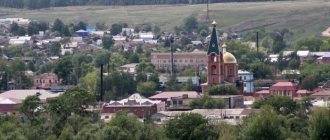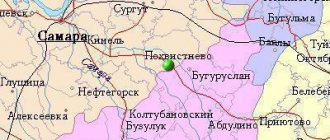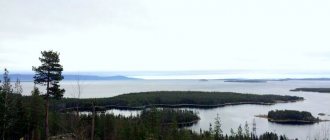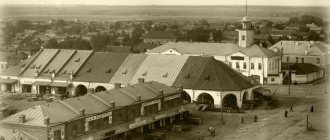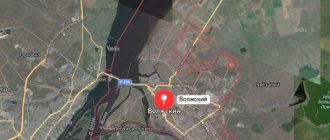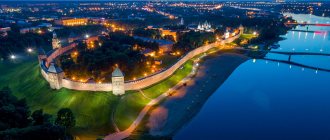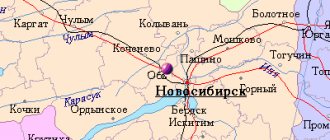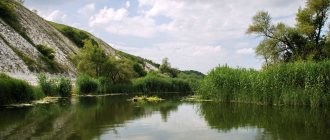City in Novgorod Oblast, Russia
| Soltsy Soltsy | |
| City [1] | |
| Memorial of the Great Patriotic War in Soltsy | |
| Coat of arms | |
| Location of Soltsa | |
| Soltsy Location of Soltsa Show map of Russia Soltsy Soltsy (Novgorod region) Show map of Novgorod region | |
| Coordinates: 58°08'N 30°19'E / 58.133°N W. 30.317°E / 58.133; 30.317 Coordinates: 58°08'N 30°19'E. / 58.133 ° N W. 30.317°E / 58.133; 30,317 | |
| A country | Russia |
| Federal subject | Novgorod region [1] |
| Administrative region | Soletsky district [1] |
| City of district significance | Soltsy [2] |
| First mention | 1390 [3] |
| City status from | 1927 |
| Height | 30 m (100 ft) |
| population size (2010 Census) [4] | |
| • General | 10 086 |
| • Evaluate (2018) [5] | 8 803 (-12,7 % ) |
| Administrative status | |
| • Capital from | Soletsky district [1], the city of Soltsy of regional significance [2] |
| Municipal status | |
| • Municipal district | Soletsky municipal district [6] |
| • Urban village | Soletsk urban settlement [7] |
| • Capital from | Soletsk municipal district [6], urban settlement Soletskoye [7] |
| Timezone | UTC+3 (MSK[8]) |
| Postal code [9] | 175040–175042 |
| Dialing code(s) | +7 81655 |
| OKTMO ID | 49638101001 |
Soltsa
(Russian: Soltsa) is a city and the administrative center of Soletsky District in Novgorod Oblast, Russia, located on the left bank of the Sheloni River, 78 km (48 mi) southwest of Veliky Novgorod, the administrative center of the region. Population: 10,086 people (according to the 2010 census); [4] 11,264 (2002 census); [10] 11,782 (1989 census). [eleven]
History[edit]
Soltsy, whose name is associated with nearby sources of salt water, [ citation needed
] was first mentioned in the chronicle in 1390 and subsequently played an important role as an intermediate station on the trade route connecting Novgorod and Pskov. [3] In 1471, the Battle of Shelon took place near Soltsy between Moscow troops led by Ivan III and the army of the Novgorod Republic, which marked the end of the political independence of the Novgorod Republic. [3] Over time, Soltsy became part of the Moscow state. [3]
As part of the administrative reform carried out in 1708 by Peter the Great, the territory became part of the Ingermanland Governorate (known since 1710 as the Saint Petersburg Governorate). [ citation needed
] In 1727, a separate Novgorod Governorate was created, and in 1772 the Pskov Governorate was formed (which existed from 1777 to 1796 as the Pskov Viceroyalty).
[ required citation
] In 1776, the Porkhov district was transferred from the Novgorod province to the Pskov province.
[ citation needed
] Soltsa was the residence of the Soletskaya ox from Porkhovsky district.
[ citation needed
]
In August 1927, the districts were abolished, and on October 1, 1927, the Soletsky district was formed with the administrative center in Soltsy. [12] The Pskov Governorate was abolished, and the district also became part of the Novgorod Okrug in the Leningrad Region. [12] At the same time Soltsy received the status of a city. [ citation needed
] On July 23, 1930, the districts were abolished, and the districts were directly subordinated to the region. [12] From July 13 to July 16, 1941 and from July 22, 1941 to February 21, 1944, Soltsy was occupied by German troops. [13]On July 5, 1944, Soltsy, together with the Soletsky district, was transferred to the newly formed Novgorod region. [13]
Development of the city: from 1927 to the present day
In 1927, the city was transformed into the center of the Soletsky district of the Leningrad region. But after the administrative division, he began to report directly to the Leningrad Oblast Executive Committee.
During the Great Patriotic War, under the influence of the fascist occupation, most of the buildings and structures of the city of Soltsy were destroyed. But after its completion, the city was practically rebuilt from scratch, while restoring a large number of architectural and urban planning monuments. That is why Soltsy is considered a historical settlement.
Economics [edit]
Industry[edit]
The main industries in Soltsy are the electronics and food industries. [3]
Transport[edit]
The railway connecting St. Petersburg and Nevel via Dno crosses the area from north to south and passes near Soltsy. The railway connecting Bologoe and Pskov via Staraya Russa crosses the southern tip of the district; However, there are no significant stations on this line in the region.
The city is located on the Veliky Novgorod - Pskov highway, and is also connected by road with Staraya Russa through Volot.
The Shelon River is navigable below Soltsy; however, there is no passenger navigation.
Soltsy
(Novgorod region)
OKATO code:
49238501
Founded:
1390
City since:
1914 City of district subordination (Soletsky district, Novgorod region)
Center:
Soletsky district
Telephone code (reference phone)
| 81655***** | 30-200 |
Deviation from Moscow time, hours:
0
Geographic latitude:
58°07′
Geographic longitude:
30°19′
Altitude above sea level, meters:
30 Sunrise and sunset times in the city of Soltsy
Links[edit]
Notes[edit]
- ^ abcde Law No. 559-OZ
- ^ abc Resolution No. 121
- ^ a b c d e Our district (in Russian). Administration of the Soletsky municipal district of the Novgorod region. Retrieved May 27, 2014.
- ^ a b Federal State Statistics Service (2011). “All-Russian Population Census 2010. Volume 1" [All-Russian Population Census 2010, vol. 1]. All-Russian Population Census 2010 [All-Russian Population Census 2010]
. Federal State Statistics Service. - "26. The size of the permanent population of the Russian Federation by municipalities as of January 1, 2022". Federal State Statistics Service. Retrieved January 23, 2022.
- ^ ab Law No. 284-OZ
- ^ abc Law No. 399-OZ
- "On the Calculation of Time". Official Internet portal of legal information
. June 3, 2011. Retrieved January 19, 2022. - Post office. Information and computing center of OASU RPO. ( Post office
).
Search for postal service objects ( postal Search for objects
) (in Russian) - ↑
Federal State Statistics Service of Russia (May 21, 2004).
“The population of Russia, the constituent entities of the Russian Federation as part of federal districts, urban settlements, settlements, settlements is 3 thousand or more people” [Population of Russia, its federal districts, federal districts, districts Urban settlements, rural settlements - administrative centers and rural settlements with a population of over 3,000] (XLS). All-Russian Population Census 2002
. - “All-Union Population Census of 1989. The current population of union and autonomous republics, autonomous regions and districts, territories, negative phenomena, urban settlements and rural district centers” [All-Union Population Census of 1989: current population of union and autonomous republics, Autonomous regions and districts , territories, regions, districts, urban settlements and villages performing the functions of district administrative centers. All-Union Population Census of 1989 [All-Union Population Census of 1989]
.
Institute of Demography of the National Research University: Higher School of Economics [Institute of Demography of the National Research University: Higher School of Economics]. 1989 - via Demoscope Weekly
. - ^ abc Snytko et al., p. 85
- ^ a b Snytko et al., p. 135
- Monuments of history and culture of the peoples of the Russian Federation (in Russian). Ministry of Culture of Russia. Retrieved June 2, 2016.
- Soletsky Museum of Local Lore (in Russian). narod.ru. Retrieved March 29, 2012.
Sights of the city of Soltsy (Novgorod region)
The ancient buildings of the central districts give the city an outstanding and unique chic: merchant houses, the Intercession wooden church, Ilyinsky Cathedral of the 1920s. The 840th Bomber Aviation Regiment, part of the 37th Strategic Air Army, is located in the suburbs. In the former home of the merchant Krasikov, there is a rather interesting and unusual city museum, where you can admire various works of art by local masters of painting and decorative art. The diverse buildings of ancient estates and the picturesque green park will amaze with their beauty and grandeur. Here everyone is invited to visit the Vasilkov family estate in the village of Vybyti, which is located 10 km from the locality in question. This is why the city of Soltsy (Novgorod region) is so popular among tourists. Numerous cultural institutions make it a very interesting area for visitors. Here you can visit the famous house of culture, the city leisure center, where there is a weaving circle, a spiritual chanting association, and a drawing studio. It is also worth visiting the district library, which is actively involved in reviving folk customs and supporting crafts. The Novgorod branch of the regional philharmonic operates in the city.
Weekend driving tour: Soltsy – the city of toys and cakes
It is believed that there are cities and areas for which half a day is more than enough to explore. Indeed, the “essentials” - a couple of architectural monuments, beautiful landscapes, a local museum - in small towns you can get around in a couple of hours if you happen to take a break on a long journey.
As a rule, you can’t go specifically to such towns either, if only because domestic infrastructure and services do not often pamper the traveler in the provinces with either comfortable hotels or the basic opportunity to pay with a credit card outside chain stores, find a cafe with wi-fi or at least find... a public toilet. Perhaps, Soltsy in the Novgorod region can rightfully be classified as such towns.
On the banks of the Shelon River
And visiting such a town from time to time, you really regret it: due to its convenient location and unique history, it could have been quite a tourist place, from which it would be a pity to leave even in a month.
But, getting into it now, a metropolitan resident feels almost like a pioneer. It is worth noting that even five years ago, at the mere mention of the name Soltsy, experienced truck drivers crossed themselves in horror (now, fortunately, the situation has changed). But first things first.
Soltsy is actually located between Novgorod and Pskov, on the banks of the Shelon River. The guest is greeted by a memorial sign: the first mention of Soltsy dates back to 1390. The Novgorod Chronicle says: “In the summer of 1390, the Novgorodians walked with Prince Semyon Olgerdovich... and stopped in Solts...”. There were many salt springs here (they are still preserved in some places), and salt mining, as in Staraya Russa, was the source of the city’s prosperity. Since ancient times, there was a road here, and as a result, wheeled and cart fishing developed. With the recent renovation of the track, it seems that the old tradition has sunk into eternity - according to legend, even in later times Peter the Great lost a wheel here...
The surroundings of Soltsy are known for a very dramatic event: here in 1471, Moscow Tsar Ivan III defeated the troops of the Novgorod Republic. And then his grandson Ivan IV the Terrible even freed the cart and wheelwrights from taxes, ordering them to make wheels and carriages for cannons. In memory of the Battle of Shelon, the local museum holds an annual conference with the participation of Russian and foreign historians and local historians.
The museum is located in the former house of the Krasikov merchants. The city is rich in so-called merchant buildings of the 19th century, and this creates a special atmosphere. The museum will tell you a lot about the history of the city, not only the ancient one. The twentieth century hit the city with all its might. Collectivization, then war... A few kilometers from Soltsy, near the village of Sosnovki, there is a memorial stone reminiscent of the fate of the Soltsy Jews killed by the Nazis, who made up a significant part of the city population.
At the end of the twentieth century, local industry also collapsed. At one time, it was located on the site of a former sanatorium, where people were treated well using local mineral waters. Now there is no factory, no sanatorium. And not so long ago, the local air regiment, which provided many jobs, was disbanded, and lovers of everything military were left to wander through the remains of the former town.
Architectural monuments also fell into decay (there are 55 of them in total). However, now both the 19th century Elijah Church and the renovated buildings on the main street look very impressive. The houses of the merchants Ardamatsky, Polyakov, and Bagrov are interesting in architecture. For entertainment and sports there is a rural park "Gorki", where various holidays are held. There are hunting and fishing grounds in the surrounding area - too many to list. There is hope that the restoration of the Vasilchikov estate in Vybiti (about 1 km from Soltsy) will be completed.
Solets' "chips"
There are two things that can only be found in Soltsy and nowhere else. These are local toys and local cakes.
The Soletsk clay toy can be bought at the museum, as well as at various fairs in Novgorod. The fish and cockerels are made in a unique color scheme - yellow background, golden, red and blue lines and dots. These colors and lines symbolize the forces of nature - the sun and water. There is also a famous toy - the Teddy Bear. In ancient times, a Varangian was called not only a warrior, but also a merchant who embarked on sometimes dangerous journeys with goods or for goods. Mishka has a staff in his paws, and behind his back is a box with salt, of course. These toy whistles are strikingly different in taste, elegance and energy from the mass souvenir consumer goods sold everywhere under the guise of “folk crafts”.
In Soltsy, as elsewhere in the Novgorod region, you won’t go hungry. But we do not recommend going into cafes and bars that pretend to be “cool” (some, like most Solets houses, do not have toilets). By the way, about toilets. There is a concrete structure at the railway station, remote from the city. There is one at the market near the bus station, but it’s pretty scary there. On a working day, in search of “conveniences,” it makes sense to go to the district administration or a local canteen (the food there is inexpensive and quite tasty). But if you have already solved your “toilet” problem, then you should come to a place called “Tea House”.
By the way, you can not drink instant coffee and tea from a bag there, but simply take with you in boxes “potatoes” and “petit fours”, “anthills” and “hedgehogs” - the assortment of Solets cakes cannot be listed. They cost from 15 to 25 rubles apiece, they are made with excellent butter and other high-quality ingredients - from flour to natural fruit and vegetable dyes, everything about them is excellent.
The Soletskaya factory also produces more durable “confectionery” - gingerbread, cookies, brushwood, but it is the cakes that could become a local brand. Perhaps someday they will. Anyone who happened to stop at the Tea Room along the way and try a cake will definitely stop and buy some while passing Soltsy. And don’t be confused by the “soviet” surroundings of the establishment, although of course, I would like to see something stylish in this merchant mansion.
The local market often sells fresh, freshly caught fish from Lake Ilmen, and if you’re lucky, you can stumble upon excellent soft cheeses made by “local” peasants. Locals are in quotes because many lands here are owned by families from the Caucasus: near Soltsy they keep cows, goats, and grow vegetables. Belarusians often bring food and consumer goods here - all St. Petersburg trains to Belarus go here. Belarusian traders also come along the highway - through the same Pskov.
How to get there?
There is almost nowhere to stay in Soltsy itself. The guest houses that exist in not very close surroundings are “things in themselves”; you won’t risk going there at random, even if you know the address. And you won’t know the details of what will be waiting for you (in particular, the price-quality ratio), even if you get through by phone and they agree to accept you. But for mobile people who have been to Pskov or Novgorod more than once, a pleasant change would be, having stopped there, go to Soltsy for a day, visit the museum, buy cakes, wander around the temple of 1824 and stand on the Shelon banks that have seen many battles, stop by Vybiti .
You can also come here from Porkhov (where the overnight stay is easier) - since the road was repaired, it will take a maximum of half an hour. The route is winding, going through villages where there are surprisingly few ruins and landfills, and elegant houses with front gardens predominate. Just before Soltsy (if you come from Pskov or Porkhov), a treacherous obstacle awaits the traveler - a railway crossing, which here is more like a high springboard. In the author’s personal rating, this crossing is one of the leaders in the list of the most insidious ambushes. It is strictly necessary to reduce the speed on it.
If you decide to start your weekend with Soltsy, then from St. Petersburg you can drive along the Kyiv highway M-20/E-95 to the Luga bypass road. The navigator usually shows a left turn to Dzerzhinsky - Medved and further along the road along the Luga River and the border of the Leningrad and Novgorod regions. However, this road is not in the best condition. It is better to get to Theophilus Hermitage and turn left following the sign for Novgorod along P-52. In both options, you will need to turn right after Medved at Soltsy, following the sign for A-116. You can also take the M-10 (a.d. "Rossiya") to Veliky Novgorod and arrive in Soltsy through Shimsk (in Shimsk - right turn). Both routes can be reached from St. Petersburg in 4-5 hours. It's about an hour's drive from Pskov, and even less from Novgorod. It is definitely more convenient for Muscovites to travel through Veliky Novgorod.
About three years ago (this is where we started our story), the A-116/R-56 highway, passing through the center of Soltsy, from Shimsk to the border of the Pskov region was a complete nightmare. Even moving at a speed of 20-40 kilometers per hour, I had to drive either in the center, avoiding huge holes in the asphalt, or along the sides (if there were any). In the city itself, the average speed was then 5 kilometers per hour, and still, in the off-season, when the central street was a mess of blocks of ice, snow, mud and concrete, flooded with dirty water, accidents and smaller breakdowns often occurred. And I didn’t really want to admire the cathedral or the mansions. Now the road has been brought into relative order (although in some places it has managed to become subdivided again, but the previous scale of destruction has not yet reached).
